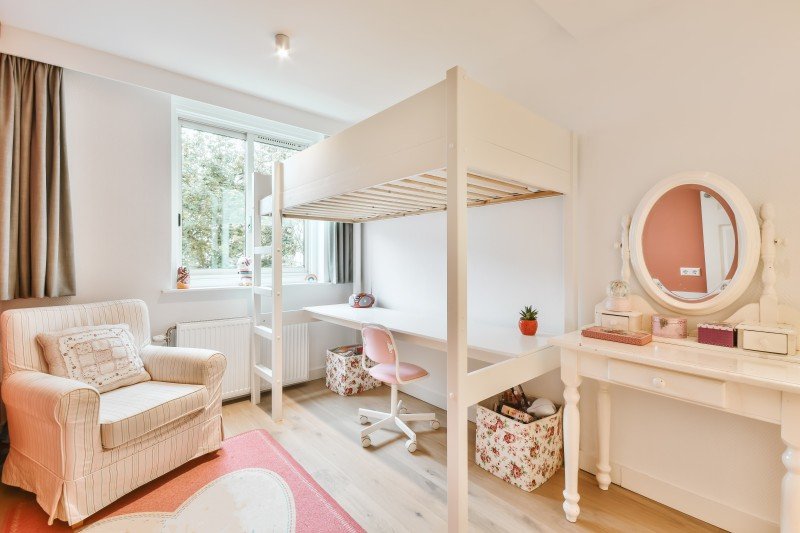A Comprehensive Guide to Children's Bunk Beds: Styles, Benefits, and Safety Considerations
Bunk beds have actually ended up being a popular option for households aiming to take full advantage of space and supply an enjoyable sleeping environment for children. With their distinct style, they offer an imaginative and practical solution for shared bedrooms, playrooms, or perhaps guest accommodation. This article explores the various designs of children's bunk beds, their benefits, safety considerations, and answers some frequently asked concerns.
The Allure of Bunk Beds
Children's bunk beds are more than just space-saving structures; they are also a gateway to daring dreams and imaginative play. Below is a comprehensive assessment of their many advantages.
Benefits of Bunk Beds
- Space-Saving: Bunk beds effectively use vertical space, making them an ideal option for smaller rooms.
- Lively Design: Many bunk bed designs consist of slides, camping tents, and themed elements, triggering creativity and enjoyment.
- Partner Sharing: Bunk beds are perfect for brother or sisters sharing a space or accommodating slumber parties.
- Flexible Use: Some designs can be separated into two private beds, providing versatility as children grow.
- Storage Options: Many bunk beds include integrated drawer storage or shelves, further boosting their usefulness.
Designs of Children's Bunk Beds
The range of bunk beds readily available today caters to various choices and requirements. Below is an overview of some popular styles.
| Design | Description | Best For |
|---|---|---|
| Requirement Bunk Bed | A standard style featuring one bed stacked above another. | Siblings sharing a room. |
| Loft Bed | Similar to a bunk bed without the bottom bunk, permits for a workspace or play area below. | Restricted space for play/desk. |
| L-Shaped Bunk Bed | Two beds set up in an L-shape, often with extra sections for storage or play. | Unique room layouts. |
| Twin Over Full | A twin bed over a full bed, accommodating different sleep requirements. | Growing children and teens. |
| High Sleeper | Stands even higher than a loft bed, normally featuring a desk or play area below. | Older kids requiring more play/desk space. |
| Camping Tent Bunk Bed | Bunk beds with a canopy or tent-like structure, producing a comfortable, fun space. | Active and imaginative children. |
Secret Features to Consider
When selecting the best bunk bed for children, the following features deserve thinking about:
- Material: Bunk beds can be made from wood, metal, or a mix. Each has its special aesthetic and sturdiness.
- Weight Capacity: Always validate the weight limitation of the bunk bed to ensure it can accommodate your children securely.
- Safety Rails: Ensure the leading bunk has durable rails to avoid falls.
- Ladder Security: A well-designed ladder should offer easy and safe access to the upper bunk.
- Finishing: Ensure any finishes are non-toxic and safe for kids.
Security Considerations
Security is critical when it pertains to children's bunk beds. The following guidelines ought to be adhered to:
- Age Appropriateness: Generally, kids under six years old need to not oversleep the upper bunk due to security dangers.
- Sturdy Construction: Ensure the frame and products are strong and can support the weight without sagging.
- Routine Maintenance: Periodically look for loose screws, bolts, or other parts that may need tightening.
- Clear Play Area: Keep the area around the bunk bed free of toys and obstacles to decrease tripping risks.
Setting Rules for Safe Use
Establishing standards for bunk bed use will assist make sure security:
- Limit Jumping and Climbing: Children need to be advised versus jumping from the top bunk and climbing up on the sides.
- Monitoring Sleepovers: Monitor young visitors while they are using the bunk bed for the very first time.
- Educate on Ladder Use: Teach how to use the ladder securely, emphasizing the importance of facing the ladder when climbing or down.
Often Asked Questions
1. What age is proper for a child to oversleep the top bunk?
The majority of makers recommend that children should be at least 6 years old to sleep in the upper bunk. This guideline is designed to alleviate the risk of falls.
2. Can bunk beds be tailored?
Yes, numerous makers use customizable options, including colors, materials, and extra features like drawers or desks.
3. Are bunk Bunks kristenlogan.uk for weight?
Bunk beds have weight limits, usually varying from 200 to 400 pounds, depending upon the design and product. Always inspect the maker's specs.
4. How do I maintain and clean up a bunk bed?
Frequently look for loose parts, keep the bed clean by wiping down surfaces, and make sure the bed linen is fresh to promote a safe and hygienic sleep environment.
5. Can bunk beds be separated into specific beds?
Lots of bunk beds feature a choice to separate them into two private beds, offering long-lasting adaptability.
Children's bunk beds are more than simple furnishings; they are a functional, versatile, and imaginative part of a child's space. With different styles readily available and various security considerations to bear in mind, moms and dads can choose the ideal bed that fits their space, meets their kids's requirements, and imparts a sense of experience. By understanding the benefits, designs, and safety procedures connected with bunk beds, families can create a wonderful and safe sleeping environment for their children. Whether for brother or sisters sharing a space or space-saving options, bunk beds remain a beloved option for numerous homes.

